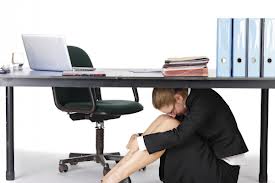Blog
Are you ready for a severe emergency? Many businesses are not adequately prepared and as a result 40% of businesses affected by a major emergency or disaster never reopen.
It is tempting to believe that accidents and emergencies will never occur at your workplace, but the reality is that emergencies can occur anywhere, any time. And the fact is that most businesses just are not adequately prepared. A 2013 emergency preparedness survey conducted by Staples found that less than half of employers report being prepared for severe emergencies, and nearly 40 percent said their small business does not have emergency safety training or drills.
But according to Bob Risk, senior strategic safety, health, and preparedness manager for Staples, “It’s much easier to prepare for an emergency than to explain why you didn’t.”
The heart of your preparation is an emergency action plan (EAP) that covers the actions the company and employees must take to ensure safety in a crisis. You should train employees on the EAP as you would train them on any safety or health program. Frequent practice drills are an important part of ongoing emergency training.
Once employees are familiar with the basic procedures to follow in an emergency, it can be beneficial to introduce obstacles into your drills that mirror unforeseen circumstances that could occur during a real emergency. For example, force employees to use an alternate exit route, or plan for some key personnel to be absent so that their backups get a chance to practice their emergency duties.
And in order to succeed, an emergency plan must also be embraced by employees. After all, incidents don’t discriminate, and when an emergency hits, the impact is not limited to managers and safety committee members. No matter what type of workplace emergency your company may face, you can be prepared to respond effectively and help protect employees, property, and resources. Don’t wait for disaster to strike – take action now and put an emergency plan in place.
Call SOS Emergency Response Technologies today 604.277.5855 and one of our Health & Safety Consultants can help you prepare. Our staff can consult on your WorkSafeBC first aid requirements, safety needs and/or earthquake preparedness interests.

Blog
By Mandy Glanville, Client Care coordinator

How many times have you driven past someone on the road having car difficulties thinking to yourself, “glad that isn’t me” or “I wonder if they need help?” Maybe you have witnessed someone stuck in a parking lot asking strangers if they have jumper cables.
What if either of these situations happened to you? Are you prepared? Myself, I never really thought about it when I got my first car. Sure, I had to change a flat tire once but those tools came included. Then my car broke down and died and left me stranded at the side of the road. I had nothing, my BCAA had expired and it was the middle of a weekday which meant I had no friends or family available to come and help me. After that I learnt my lesson and bought myself a Road-Side Assistance Kit.
Here at SOS Emergency Response Technologies, we don’t want you to learn the hard way. So we want you to know about our Automotive Economy Road Warrior Kit – SQ6007 $48.90 and how it can help you in an emergency situation.

This kit includes:
• 30 minute high intensity light stick
• Flashlight
• Reflecting Triangle
These first few items are useful and could be crucial to your safety if you have a road side emergency in the dark.
• Leather Work Gloves
These gloves come in handy for most situations and can help give you a better grip on whatever you are trying to fix.
• Jumper Cables
• Tow Rope
The jumper cables may be a bit more self-explanatory than the tow rope. You may not think you need a tow rope unless you’re more of the off-roading type but there are still medians along the highway as well as ditches.
• Duct Tape
• Utility Knife
These two items speak for themselves don’t they?
• Solar Blanket
• Waterproof Poncho
• Drinking Water
• Whistle
• Help Sign
Most people think these items are for more dire emergencies but they can come in handy and help you feel a little more comfortable during an emergency. If you don’t have power in your car the solar blanket can help you stay warm while you are waiting for help to arrive. If you have a long wait the drinking water is on hand to keep you hydrated. The poncho can help keep you dry if it is raining and you have to change your tire. Most importantly the help sign and whistle can be used to get people’s attention. As I mentioned, you probably have driven by people broken down on the highway, but how do you know if they need help or not? Having this sign can help you grab a Good Samaritan’s attention to help you out if you need it.
All these items come in a heavy duty back pack that you can just throw in the trunk of your car. The items only fill up the backpack half way so there is room to add a few extra items you may think you need. A couple food bars and a compass for the campers or off roader types since you may get stuck in more remote areas. Zip ties, a small tool kit, maybe a few coloring books and crayons if you have kids to make sure you have something on hand to keep them distracted.
You could also add our Automobile First Aid Kit – FK1024that will fit right inside so that you are prepared for any injuries that may happen.
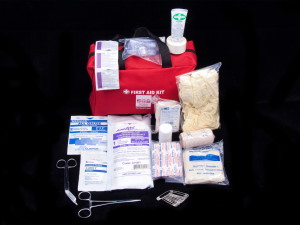
Not only will this kit help you out for any roadside emergency but it will also come in handy in case emergency strikes while you are on the road. Some people think to have preparedness kits for their home and workplace but nothing in their cars. Think about how much time you spend in your car on a daily basis and the likelihood of an emergency happening while you are on the road.
This is a perfect gift for family or friends to show that you care for their safety or for yourself so you don’t have to learn the hard way like I did.
Blog
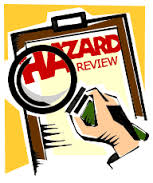 WorkSafeBC inspectors may suggest that they are just trying to “get the facts,” but every question they ask is designed to get the evidence they need. You should always be on your toes and follow the military maxim, “Never volunteer.” Inspectors are like TV interviewers. They’re trying to get the information they need, and they know that you are unlikely to volunteer anything that will be damaging to your case. As a result, they resort to indirect questions. Furthermore, they often phrase these questions carefully, trying to make it look as if you are being given a chance to exonerate yourself, or justify questionable procedures.
WorkSafeBC inspectors may suggest that they are just trying to “get the facts,” but every question they ask is designed to get the evidence they need. You should always be on your toes and follow the military maxim, “Never volunteer.” Inspectors are like TV interviewers. They’re trying to get the information they need, and they know that you are unlikely to volunteer anything that will be damaging to your case. As a result, they resort to indirect questions. Furthermore, they often phrase these questions carefully, trying to make it look as if you are being given a chance to exonerate yourself, or justify questionable procedures.
Dealing with safety inspectors requires balance and common sense. Never lose sight of the fact that they are professionals, and that they are looking for information that may not make you or your company look good. On the other hand, inspectors are doing an important job, helping to protect the health and safety of your employees.
Keep the following guidelines in mind:
• Never be rude. Even when you think that you should not cooperate, be polite, but firm. Personal animosity will only make a bad situation worse.
• Be cautious. Never volunteer anything. Never grasp at an opportunity to put yourself or your employer in a good light. Why not? Think about it. How often have you listened to people talk themselves out of a job by responding too carelessly to your carefully crafted questions? The same could be true in this case. Choose your words carefully.
• If in doubt, you can refuse to answer a question. In most cases, you can ultimately be compelled to respond, but many times the matter will not be pursued. If it is, you’ll have time in the interim to consult with counsel as to the best approach.
Don’t
• Demonstrate any activities or operations for the inspector
• Volunteer any information
• Volunteer any records not requested
• Make any admissions of guilt
Do
• Designate one qualified, knowledgeable person to be the liaison with the inspectors, and train the person accordingly
• Examine a warrant carefully
• Duplicate the inspector’s tests and actions
• Indicate trade secret area
• Prepare, with the help of counsel, a standard operating procedure for handling inspectors
• Conduct your own safety audits regularly, making sure that this important “quality control” element is part of your compliance program
Blog
Guest blog by Jan Kirkpatrick, President, First Edition First Aid Training Inc., National Philips AED Distributor
Philips AED’s in the Workplace? Absolutely. They are saving lives.
The national survival rate, for cardiac arrest (with EMS/Fire responding) is less than 5%. Locations that house an AED may experience survival rates as high as 70-100%. This is because lay-people are able to bring the AED to the patient in less than 4 minutes.
After calling 911 and turning on a Philips AED, the unit will coach the rescuer through the emergency until EMS/Fire is able to respond and take over patient care. This is one of the key pieces to the substantial increase in workplace cardiac arrest survival.
Cardiac arrest saves (and survival) are occurring across Canada as a result of basic CPR training and the quick responses of co-workers, friends and families.
Philips AED’s are designed to be used by the ordinary person in an extraordinary moment. They are the fastest, safest, most user-friendly AED’s on the market and require no regular scheduled maintenance.
Protect your employees and clients by becoming a ‘heart-safe workplace’.
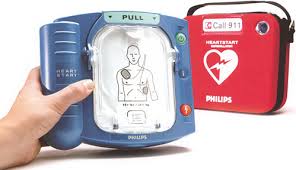
Blog
When planning for an emergency the rule of thumb is to plan for the “worst case scenario.” Out here on the west coast we always hear all this earthquake talk…the big one is coming…expect the unexpected.
Much of the concern centers on school safety, preparing a household kit, there is less discussion on how your business if going to be affected. The rule of thumb is for households to be able to manage without help for 72 hours after an emergency. Whether it be flood, earthquake or any other natural disaster. However, businesses really need to be prepared to survive for a lot longer than that. Businesses require more resources than you would expect to remain operational. We have to assume airports will be closed, bridges will be inaccessible and infrastructure will be compromised.
According to the Toronto based Institute for Catastrophic Loss Reduction, “A quarter of businesses that close because of natural disaster never reopen.” It also says businesses with fewer than 10 employees are “especially vulnerable.”
FACT: Vancouver is at risk for a major earthquake.
According to Barbara Yaffe, a reporter for the Vancouver Sun, “Companies in this city that prepare for a Big One will have a much better chance of reopening and surviving financially.”
We at SOS understand that employers might have a hard time investing time and money in disaster planning when they are concerned about meeting the next payroll – but making the decision to be prepared now will aid local business should a natural disaster occur. The loss of jobs, life and property is a reality if businesses do not take the time to invest and plan properly. With a 1/3 of our time spent at work many of us could find ourselves at work when an earthquake hits.
Does your office have a plan? supplies?
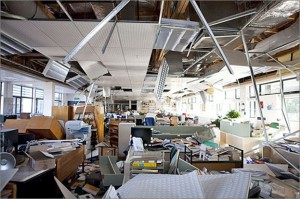
Blog

On October 17th, a locally-driven, world wide “Drop, Cover, and Hold On” drill will take place called The Great ShakeOut. All residents, agencies, businesses, and organizations across the world are encouraged to take part in the largest earthquake drill in history! Register here http://shakeoutbc.ca/
With this fantastic event only 2 weeks away, we thought it be a great time to share some earthquake safety steps with you:
Before the next big earthquake we recommend these steps that will make you, your family, or your workplace better prepared to survive and recover quickly:
- Secure your space – identify hazards, secure bookshelves and heavy furniture
- Plan to be safe – create a family emergency response plan, have a meeting place
- Organize emergency supplies – ensure you have enough emergency food and water for a minimum of 72hrs. It should be easy to carry in case you have to evacuate
- Minimize financial hardship – organize important documents; keep copies in an alternative location if possible
During the next big earthquake, and immediately after, is when your level of preparedness will make a difference in how you and others survive and can respond to emergencies:
- Drop, Cover & Hold – when the ground starts to shake
After the immediate threat of the earthquake has passed, your level of preparedness will determine your quality of life in the weeks and months that follow
- Ask for feedback on how the drill went.
- Schedule the next drill for one year later (or sooner).
- Share photos and stories at Share the ShakeOut.
- Encourage your staff to prepare at home
